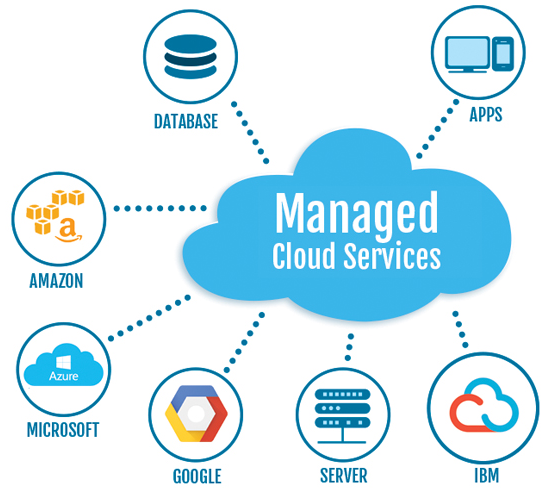Simplify Your Facilities With Cloud Solutions
As services navigate the ever-evolving landscape of innovation and information management, the duty of cloud services in streamlining facilities has actually ended up being increasingly popular. Exactly how can companies effectively navigate this change and absolutely unlock the possibility of cloud services for streamlining their facilities?
Benefits of Cloud Solutions
Cloud services supply a streamlined strategy to handling IT framework, supplying businesses with adaptability, scalability, and cost-efficiency. Among the crucial benefits of cloud solutions is the scalability they use. Businesses can easily scale their sources up or down based upon need, guaranteeing they only pay for what they utilize. This adaptability is especially useful for companies with fluctuating requirements or those experiencing development.
In addition, cloud solutions eliminate the demand for organizations to purchase pricey software and hardware. This cost-efficiency is a considerable advantage, specifically for tiny to medium-sized ventures seeking to decrease ahead of time prices. By utilizing cloud solutions, companies can access top quality IT resources without the significant price connected with standard framework setups.
Moreover, cloud services offer businesses with the flexibility to access their information and applications from anywhere with a net link. This level of availability improves collaboration among groups, makes it possible for remote work, and boosts total productivity. The flexibility offered by cloud solutions encourages services to adjust rapidly to changing market problems and customer needs.
Cost Savings and Scalability
In addition to the functional advantages highlighted previously, the assimilation of cloud solutions right into a company's infrastructure generates substantial expense savings and boosted scalability. Cloud services supply a pay-as-you-go version, enabling services to range resources up or down based on current needs, therefore staying clear of the prices connected with keeping excess ability. This flexibility allows firms to adjust quickly to changing demands without sustaining unnecessary expenditures.
In addition, cloud solutions get rid of the requirement for in advance investments in hardware and software application, lowering resources expenditures. Operating costs are additionally minimized as companies no much longer require to take care of and maintain physical web servers, resulting in reduced energy consumption and IT staffing prices. Furthermore, cloud services give automatic updates and maintenance, making sure that the facilities continues to be updated and safe and secure without requiring hand-operated treatments.
Improved Security Actions
Executing rigorous safety steps is critical when incorporating cloud services into a company's framework to guard delicate information and ensure conformity with sector laws. Cloud solution suppliers supply improved protection functions such as data file encryption, firewall software protection, and multi-factor authentication to alleviate cybersecurity risks.
Furthermore, routine safety audits and compliance assessments help determine vulnerabilities and make certain adherence to sector requirements. Companies can additionally benefit from functions like automated safety and security updates and real-time hazard surveillance provided by cloud company. By focusing on protection steps and staying aggressive in attending to prospective risks, services can with confidence take advantage of cloud solutions while securing their useful information from unapproved accessibility or violations.
Transitioning to Cloud Framework
To effectively incorporate cloud solutions blog here into a firm's infrastructure, an organized technique that addresses the shift towards cloud-based solutions is critical. Transitioning to shadow framework includes cautious preparation and implementation to guarantee a smooth migration process. The very first step is to examine the present framework and determine which applications and systems appropriate for movement to the cloud. This assessment ought to take into consideration aspects such as data sensitivity, compliance demands, and efficiency demands.
As soon as the assessment is complete, a movement technique ought to be developed. This strategy should describe the timeline, sources, and obligations for moving each component to the cloud. It is vital to connect this strategy plainly to all stakeholders to make certain alignment and minimize interruptions throughout the change.
During the movement tracking, process and screening are important to identify and address any kind of issues quickly. Routine checkpoints must be developed to track development and make needed changes. Additionally, training for workers on making use of cloud services ought to be supplied to ensure a successful transition and optimize the benefits of the brand-new facilities.
Finest Practices for Cloud Adoption
Successful adoption of cloud services rests on the calculated alignment of organization goals with technological abilities and organizational readiness. To ensure a smooth shift to the cloud, organizations must start by performing a detailed analysis of their present framework and identifying which work are best suited for cloud migration. It is essential to include key stakeholders from different divisions in the decision-making process to get buy-in and address any type of problems early.
One more best practice for cloud adoption is to focus on safety and security and conformity. Organizations needs to thoroughly evaluate the safety measures used by cloud provider and make certain that their data is shielded according to sector criteria and governing demands. Carrying out durable data file encryption, accessibility controls, and regular safety audits can aid minimize threats related to cloud adoption.

Conclusion

As companies browse the ever-evolving landscape of innovation and information management, the function of cloud services in simplifying framework has ended up being significantly famous - Cloud Services. Just how can organizations efficiently browse this transition and genuinely open the possibility of cloud services for simplifying their framework?
Cloud solutions offer a streamlined method to handling IT infrastructure, offering services with scalability, flexibility, and cost-efficiency. By making great post to read use of cloud solutions, services can access premium IT sources without the large rate tag linked with conventional facilities configurations.
To make sure a smooth shift to the cloud, organizations must begin by carrying out a detailed evaluation of their existing framework and recognizing which work are best matched for cloud movement.
Comments on “Unlocking Success with LinkDaddy Cloud Services: Making Best Use Of Universal Cloud Service Influence”